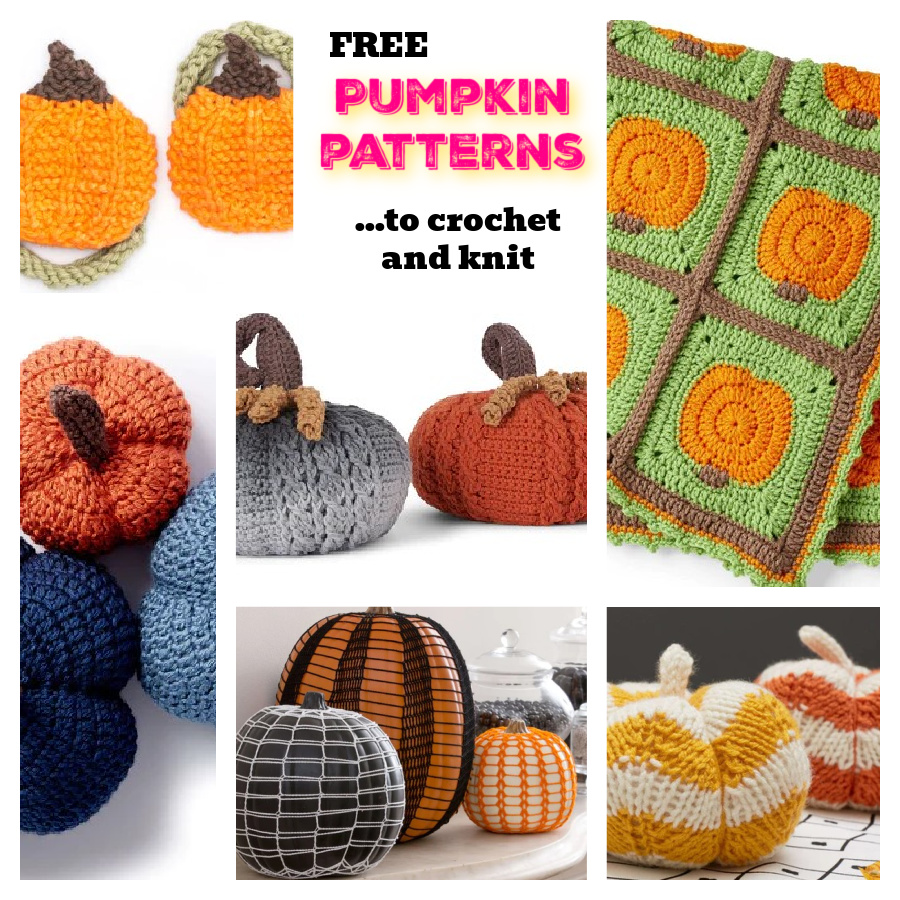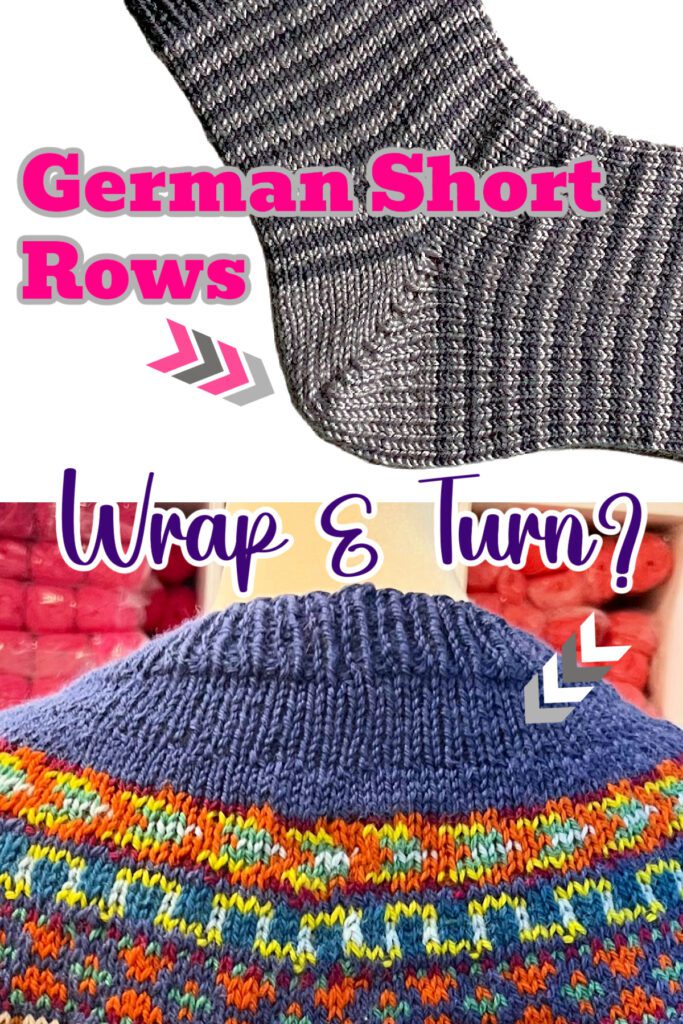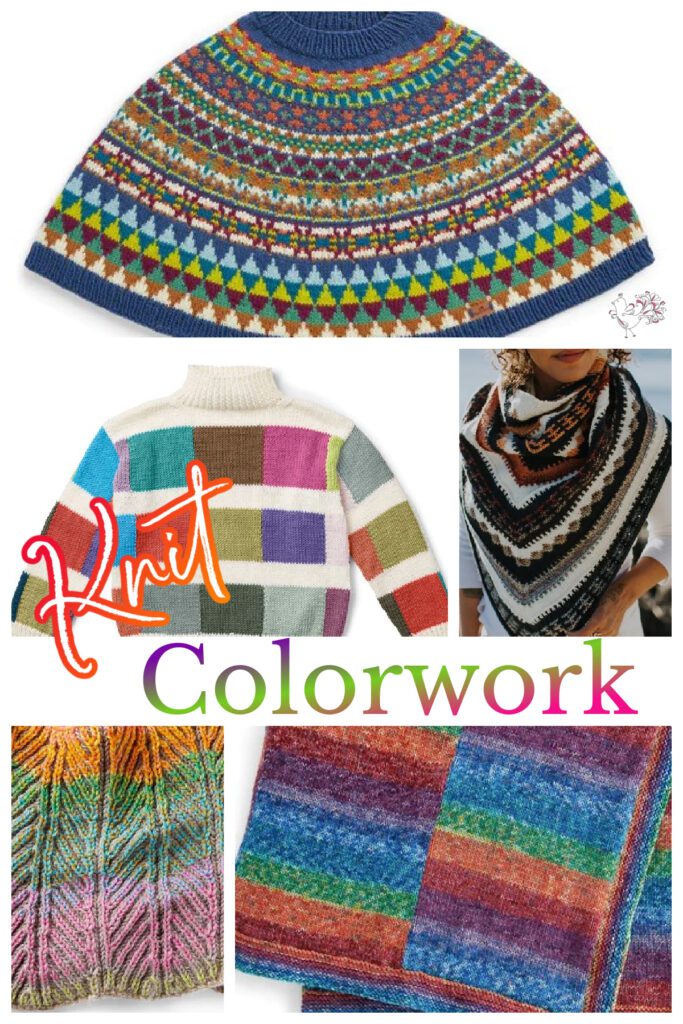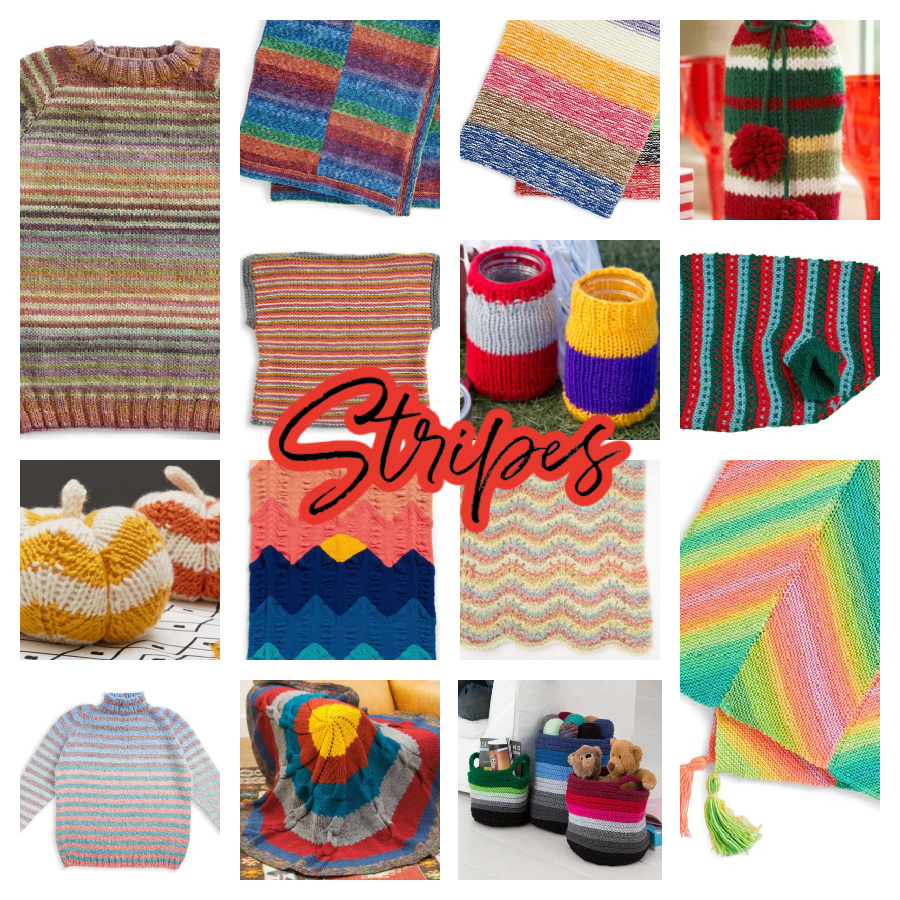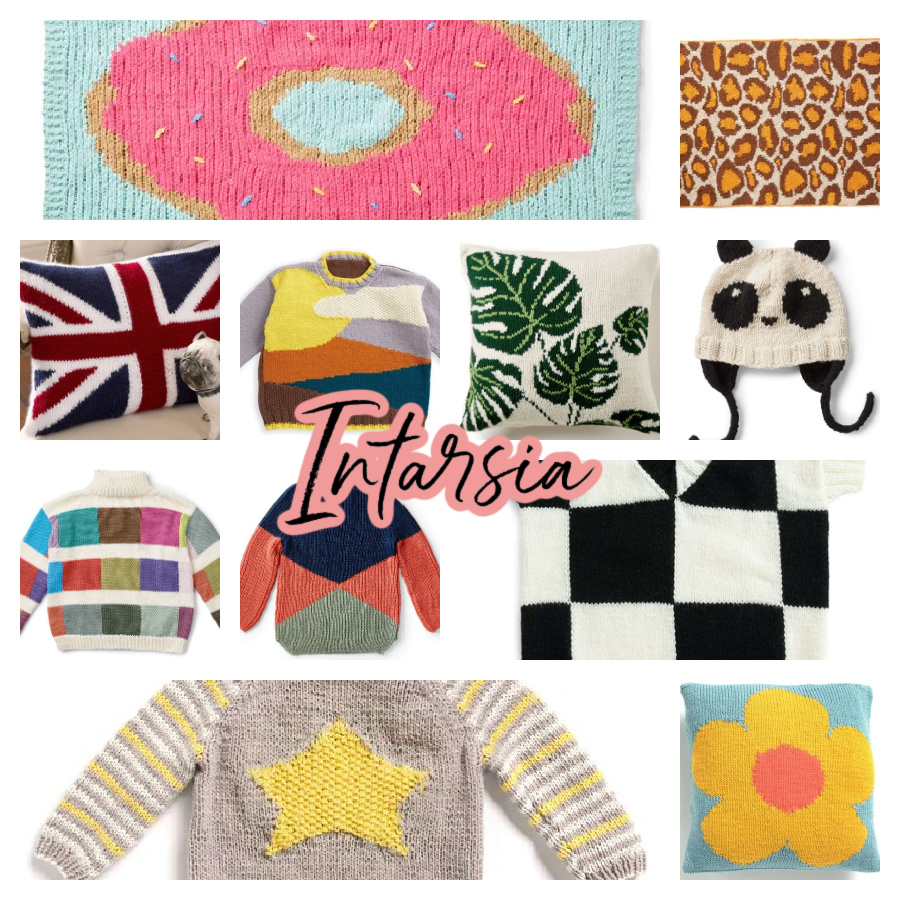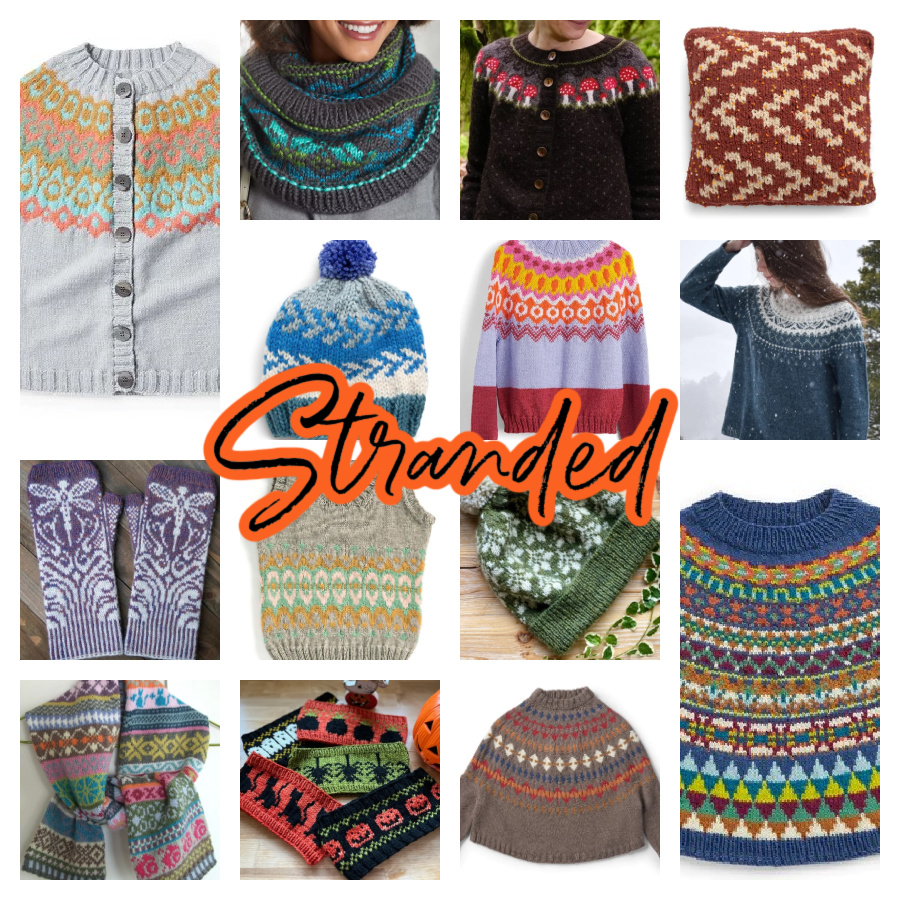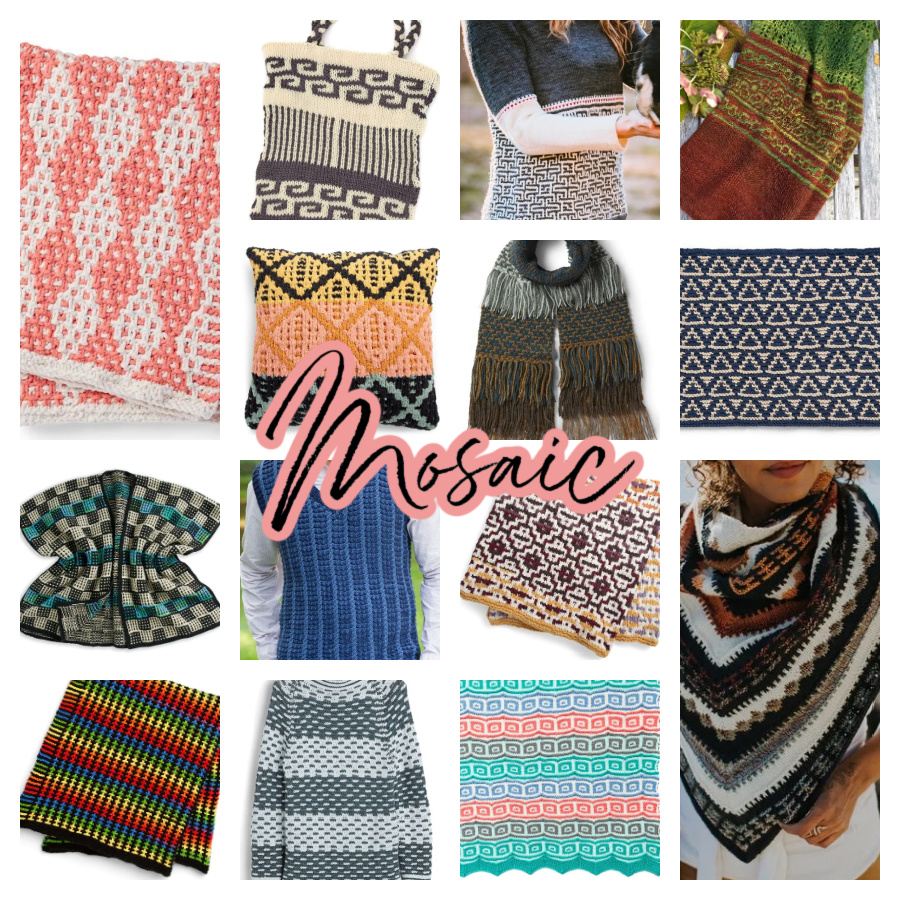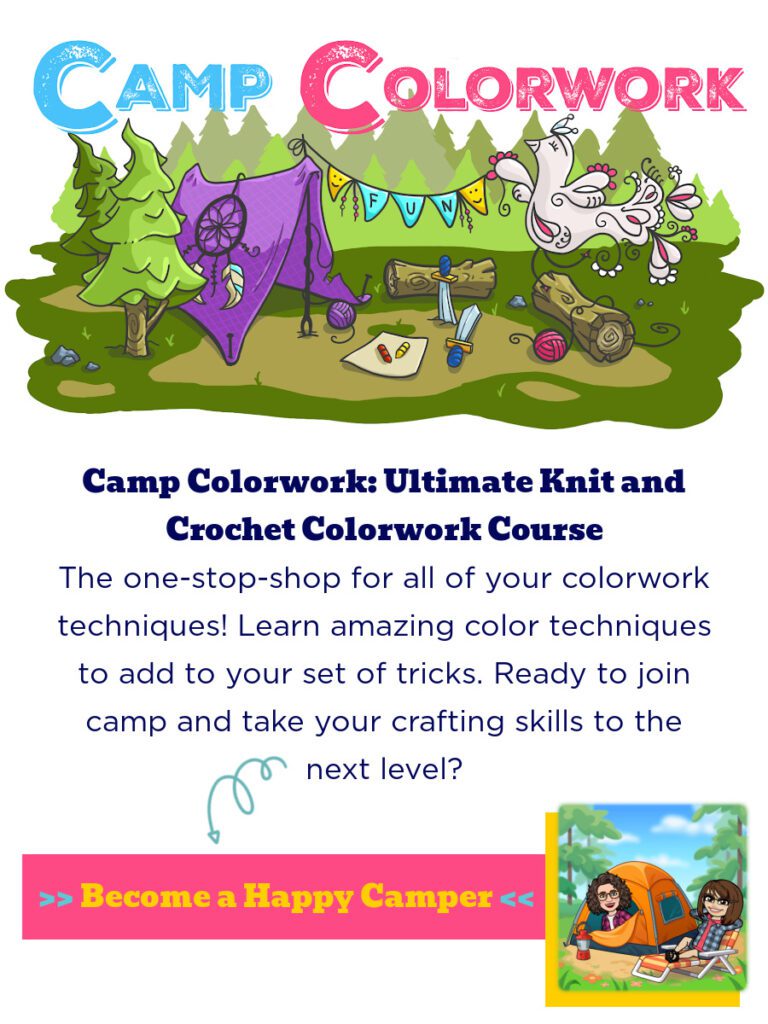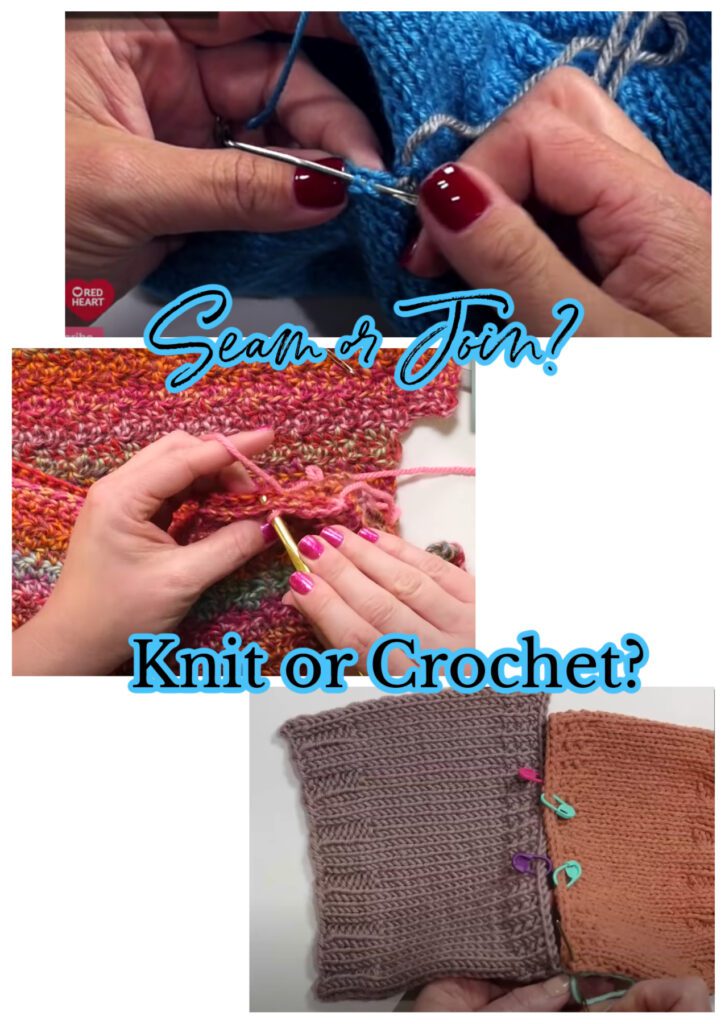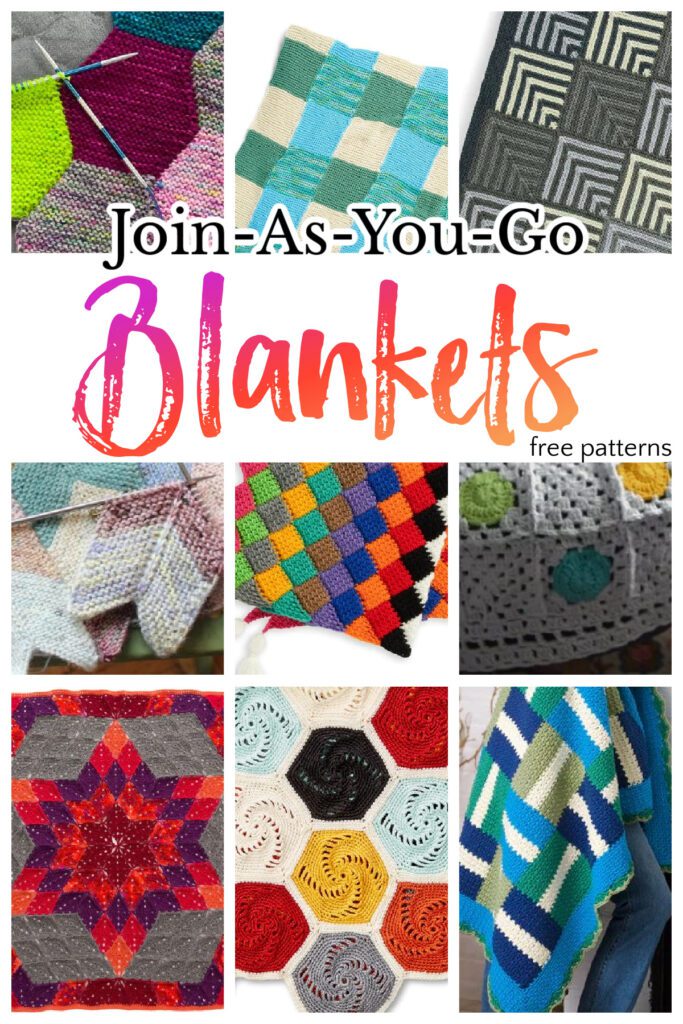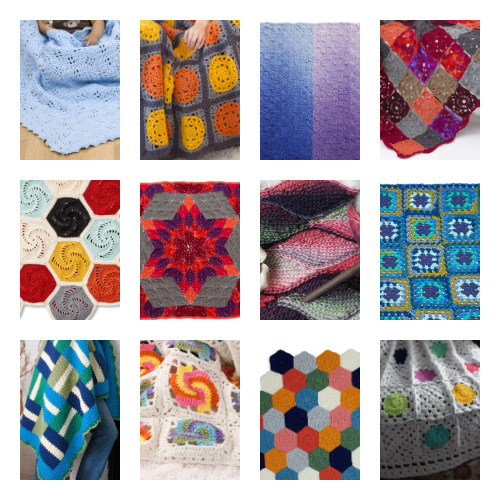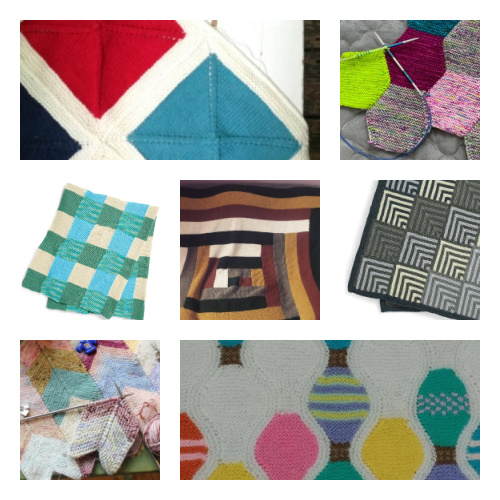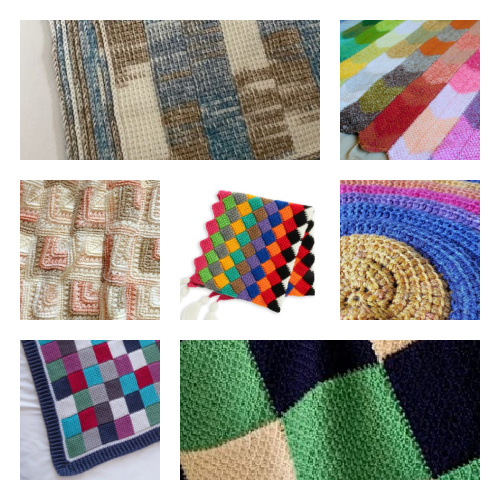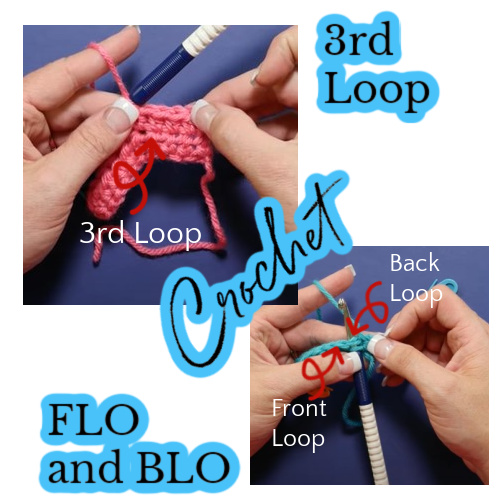All the Halloween patterns you need are here! Decorate your home with projects big and small, and make costumes for babies, kids, teens, and adults! Altogether, we have compiled more than 150 free Halloween decorations and costumes with knit and crochet patterns. We’ve organized them into different categories so you can easily find the patterns you need.
A Roundup of Roundups
We’ve already shared loads of Halloween patterns with you so we rounded up the roundups. Now they’re all in one place! Plus we’ve added some extra free Halloween decorations and costumes knit and crochet patterns. We want to make sure we didn’t miss anything you might want to make this Halloween!
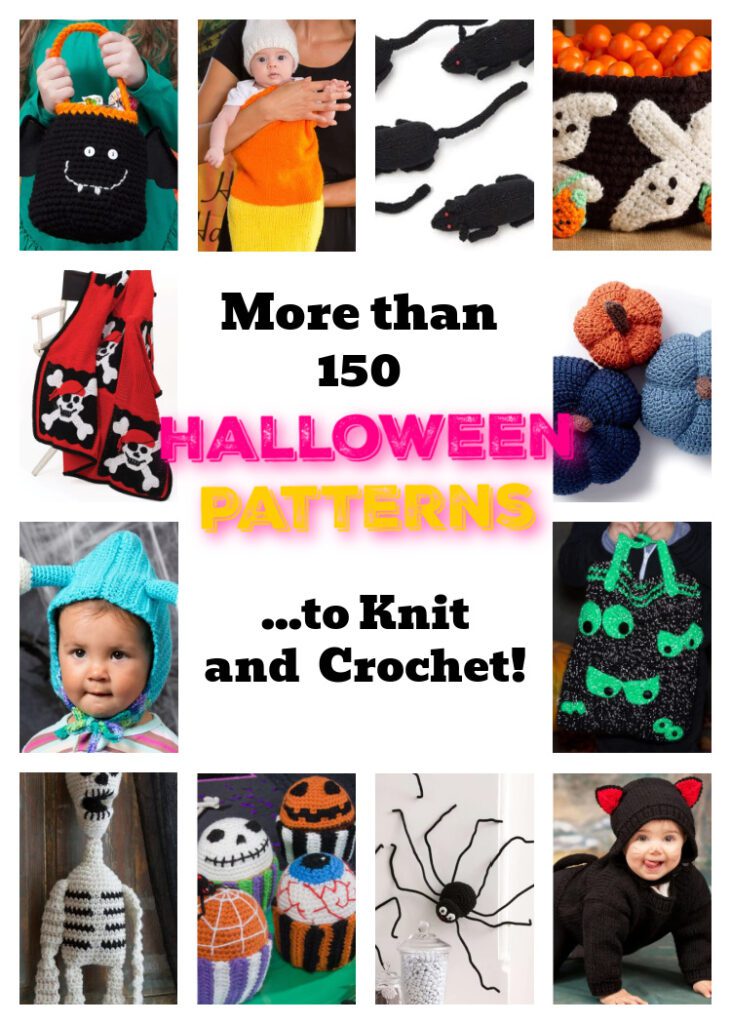
29 Free Knit and Crochet Pumpkin and Jack o’ Lantern Projects
Of all of the free Halloween decorations and costumes knit and crochet patterns available, pumpkins are always a popular choice. After all, it’s the season for pumpkin lattes and cold brews, pumpkin pies, muffins, and cheesecakes. So check out these more than two dozen free knit and crochet pumpkin patterns. Let’s get decorating for fall!
10 Free Bats and Vampire Knit and Crochet Projects
Bats and vampires are always a great, freaky, and gory choice for adding some Halloween spookiness to your knit or crochet home decor. And they work really well on accessories for simple costumes too. Click on the link above or the image below to see which creepy flying creature you’ll be crafting next.
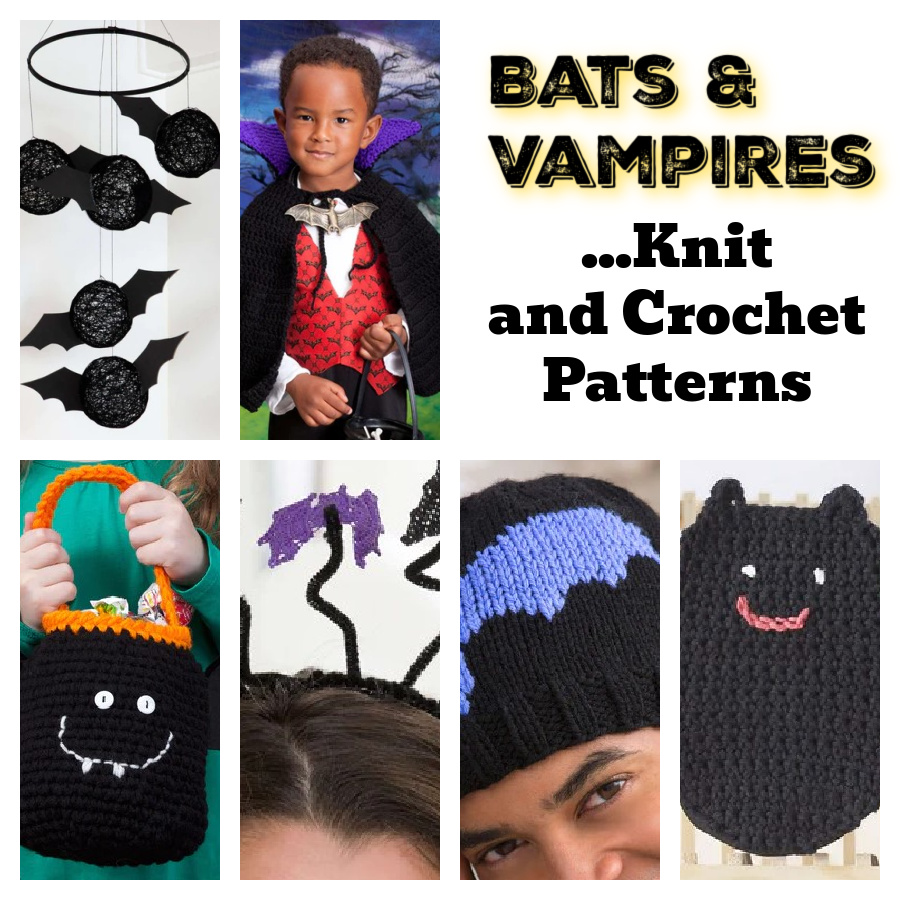
18 Free Halloween Decorations and Costumes: Witch and Black Cat
We like to try to find things that you’ve never made before. So, we did this roundup of witches and black cat patterns. We think some of the most original designs are in this roundup.
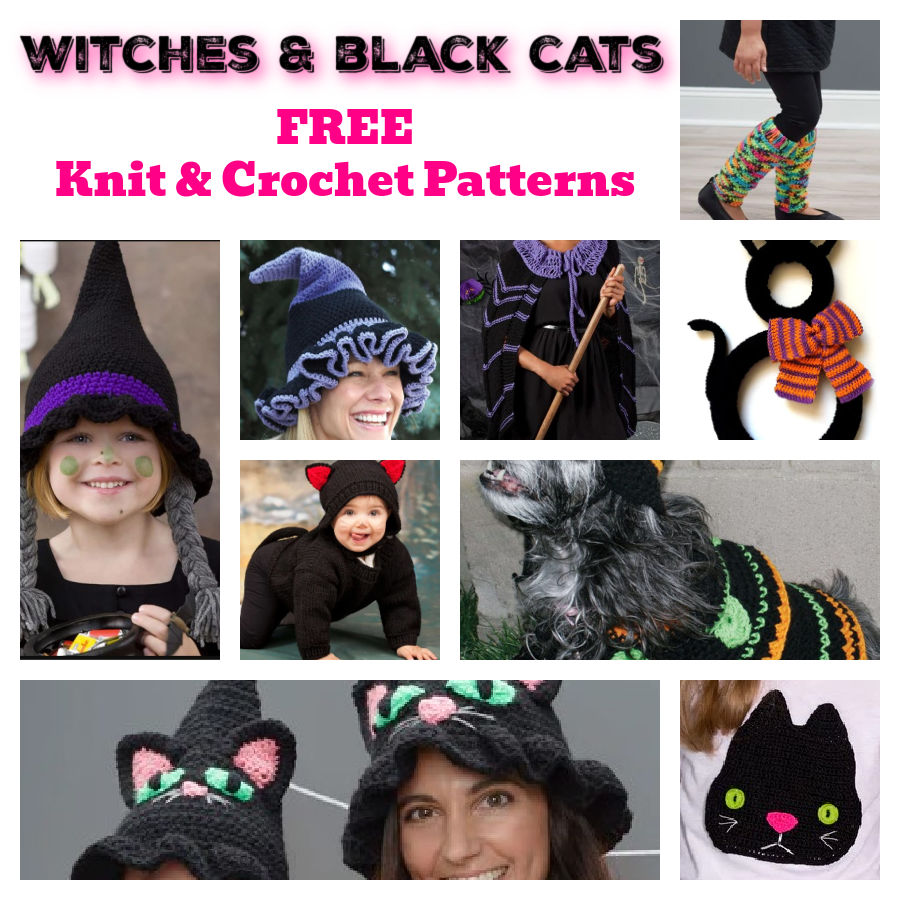
23 Free Pirate, Skull and Skeleton Knit and Crochet Patterns
Pirates and skeletons go together like peanut butter and jelly, don’t they? They’re a natural fit! And we found some fabulous knit and crochet patterns that are sure to please. Ladies and pets are included too, so there’s no excuse to NOT dress up this Halloween! These pirate and skeleton knit and crochet patterns are also great for ‘Talk Like a Pirate Day’ and other random and unusual holidays throughout the year.

21 Free Knit and Crochet Monster Projects
There are spooky monsters and there are cute monsters. And they all make great free Halloween decorations and costumes knit and crochet patterns. So, check out this cute, scary, and colorful selection we’ve pulled together for you. We’ve found everything from trick-or-treat bags to hats and sweaters, because you know it’ll likely be cold. Youngsters are sure to appreciate the little monsters if you’d rather not give out candy.
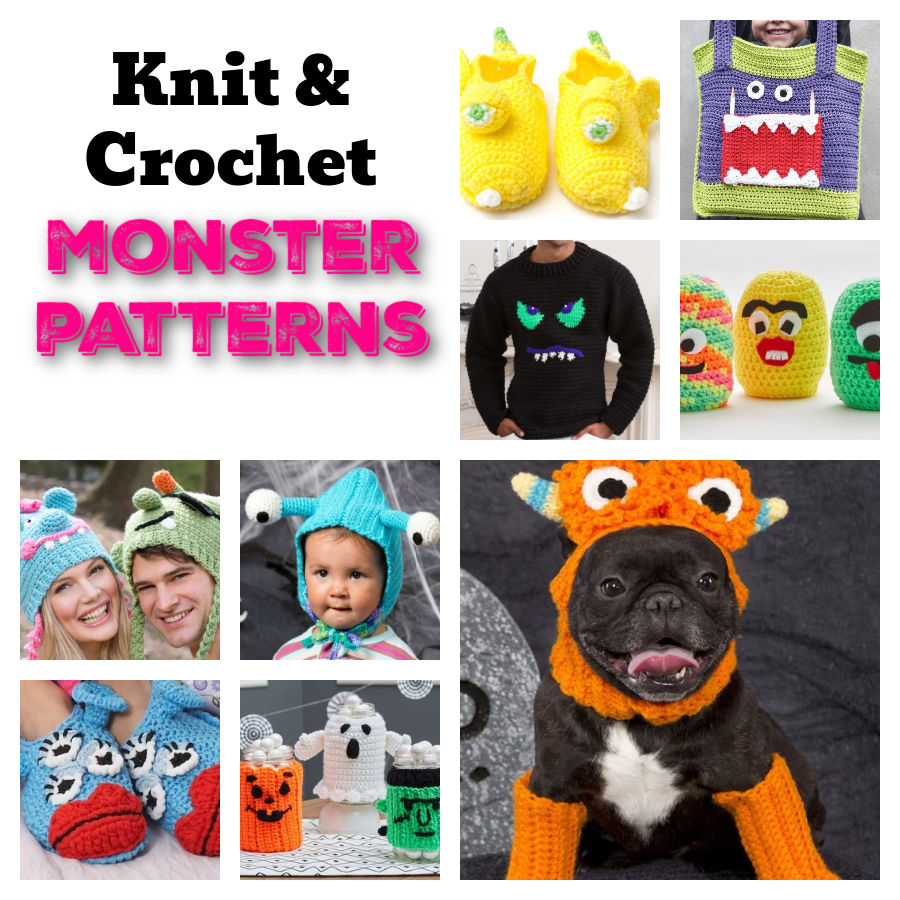
23 Free Ghosts and Spiders Knit and Crochet Patterns
Ghosts and spiders are suitable for any and every Halloween. So, have we got a collection for you?! From black widows to Casper-style friendly ghosts, we’ve got you covered for ghosts and spiders.
Knit patterns for these creepy creatures are hard to find, so if you stumble across some, do let us know so we can share them here. But, we do have lots of creepy crochet patterns. If you’re a knitter who’d love to learn to craft these crochet creepies, then we can help! Join the wait list here for BiCrafty Bootcamp for knitters who want to learn crochet.
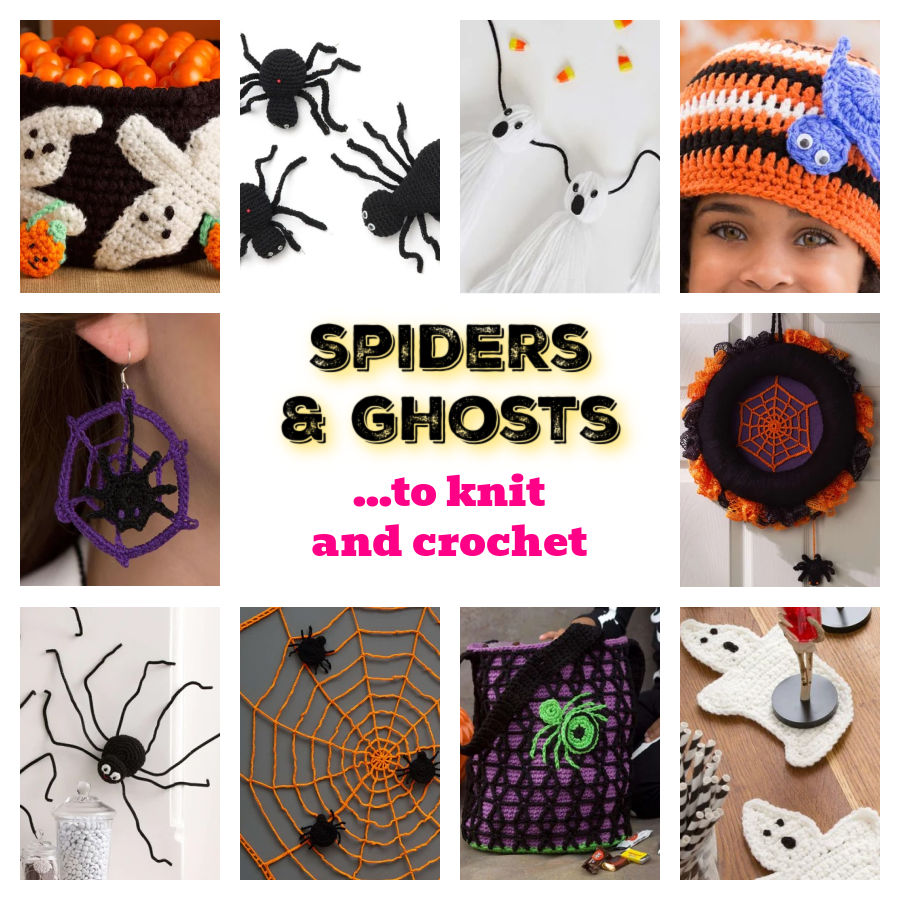
11 Free Halloween Decorations and Costumes: Candy Corn
Once candy corn hits the stores, you know that fall and Halloween are on the way. This small honey-sweet triangular snack (which is especially good mixed with salted peanuts) doesn’t just taste good. It also has those vivid Halloween colors which make the design perfect for all kinds of fall decor.
Brighten up your Halloween decor with some of these cute, cozy, candy corn knit and crochet patterns.
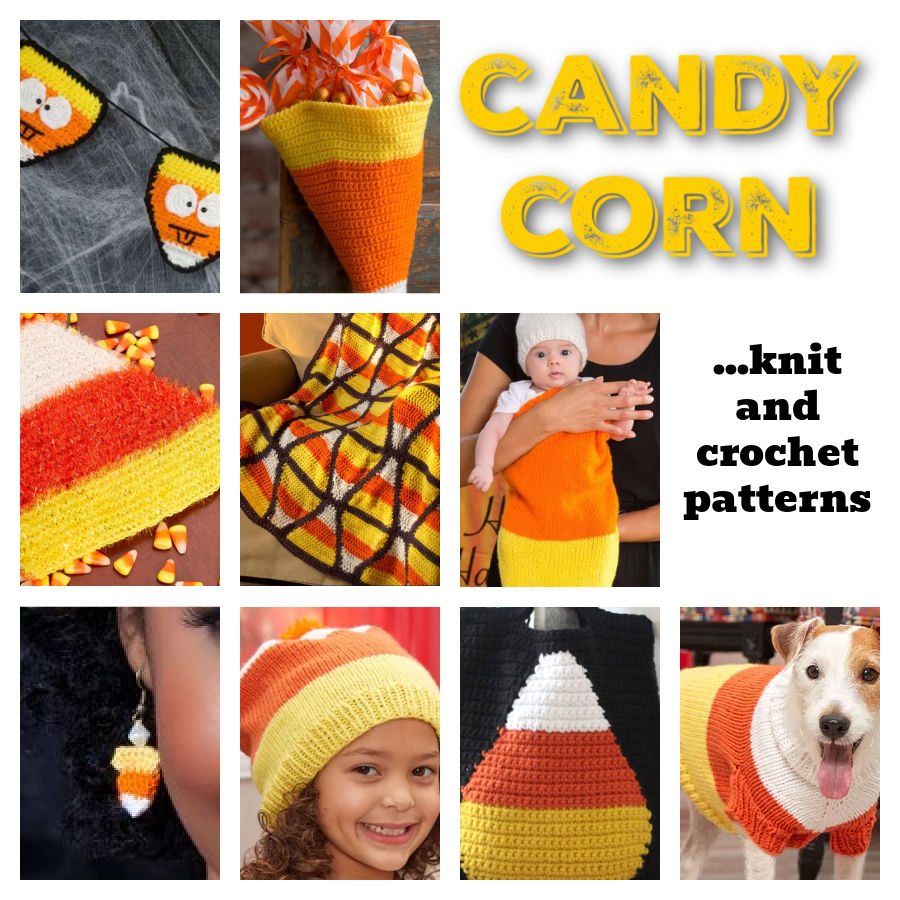
Halloween Decorations
These decorations don’t really fit into the other categories above, but they’re still perfect for your Halloween fun! Whether you want to add color to your home or display your love of Halloween on yourself or the outside of your home, we have something that will fit you perfectly!
- Sparkle Crochet Pumpkin
- Halloween Motif Necklace
- “Very Scary” Pullovers
- Trio of Treat Bags
- Halloween Puppets
- Halloween Gift Trims
- Fall Festival Necklace
- Bug-Infested Bowl
- Spooky Cup Cozies
- Halloween Tree of Spookiness
- Crochet Spooky Treat Bags
- Halloween Rats
- Halloween Top Hat
- Spooky Stripes Scrubby
- Halloween Party Banner
- Trick or Treat Wreath
- Scary Muffins
- Halloween Decor Party Banner
- Creeptacular Knit Halloween Bunting
- Boo Dishcloth
Halloween Costumes
There’s always more room for crochet or knit Halloween costumes! Don’t you agree? Hey – if you already have the yarn, then why not create? Here are more ideas for fun, yarny Halloween costumes!
- Halloween Boy Hero
- Girly Masked Hero Set
- Flower Child Vest
- Red Riding Hood and the Wolf
- Costume Hats
- Kitty and Mouse Headbands
- Hagar and Helga Hats
We have loads more round-ups here that also have fun hats and costumes ready for your crafting pleasure! Be sure to check them out. You never know…we might have just the costume you or your kiddo wants for Halloween.
Happy browsing!
- 45 Free Bunny Rabbit Patterns to Crochet and Knit
- 17 Free Mermaid Projects | Knit, Crochet, Craft
- Free Polar Bears Projects to Knit and Crochet
- 33 Knit and Crochet Owl Projects
- 13 Free Chicks and Ducks Crochet and Knit Patterns
- 9 Free Panda Crochet and Knit Patterns
- 96 Free Puppy and Dog Projects to Crochet and Knit
- 13 Free Dinosaur Projects to Crochet and Knit
- 11 Free Bee Patterns to Crochet and Knit
- 8 Penguin Projects to Crochet and Knit
- 51 Free Teddy Bear Crochet and Knit Projects

